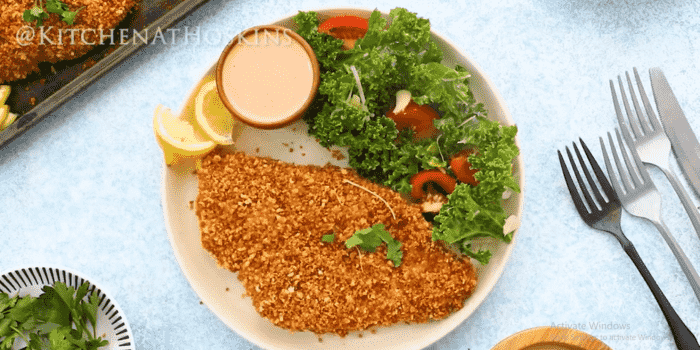Hibachi vegetables are a Japanese steakhouse favorite, known for their buttery garlic flavor and elegant presentation. This side dish is filled with colorful veggies and coated in a savory umami sauce. Not only are these vegetables healthful and versatile, but they are also ready in just 20 minutes with no special equipment needed.
Perfect Hibachi Night
For a complete Japanese-inspired feast, pair these saucy hibachi vegetables with noodles, garlicky shirataki fried rice, or the protein of your choice. Made with fresh yellow squash, zucchini, mushrooms, and onions, this home version is as delicious as the restaurant style. With just a few ingredients, you can enjoy a simple, yet perfect meal. For a fun and casual dining experience, serve them in a bowl with Yum Yum Sauce on the side.
The overhead view of the black tile surface, fork, and small bowl of sauce adds to the authentic feel of a Japanese steakhouse. Preparing this dish at home brings the fun of the chef’s antics, like catching an egg with his hat, right to your kitchen. Enjoy this comfort meal with a group of friends or strangers for a piping hot and delicious experience.
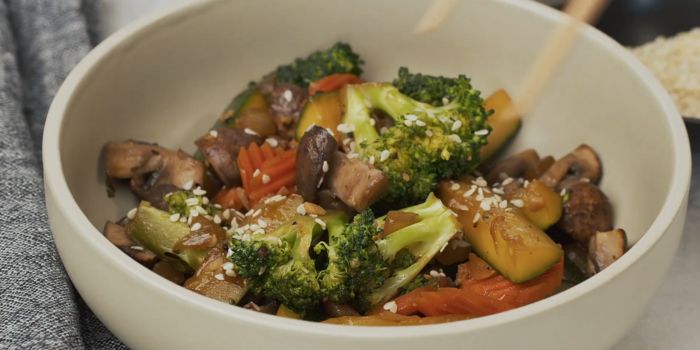
WHAT IS HIBACHI STYLE FOOD?
Hibachi style food is popular in American Japanese steakhouse restaurants like Benihana and Kobe. These places cook meat, vegetables, and rice on hibachi grills at high heat, often by a skilled chef. The literal meaning of hibachi is fire bowl, reflecting the use of an open-flame grill called a shichirin. Hibachi-style dishes are typically flavored with garlic, ginger, sesame, and soy sauce. This style has been popularized in American Japanese steakhouses and often includes seafood and noodles. In the US, teppanyaki grilling on large electric griddles has become interchangeable with hibachi cooking, making it a fun dining experience.
Why l Love This Recipe
You’ll love this recipe for hibachi vegetables because it’s the perfect combination of food, entertainment, and fun. Hibachi vegetables bring the comfort of a restaurant meal to your home. The meal is quick and easy to prepare, with fresh vegetables that are perfectly cooked and crunchy. The buttery sauce is a match made in heaven with these stir fry veggies.
With simple, minimal ingredients, this dish can be ready in less than 30 minutes. It’s even faster if you prep the pre-cut veggies ahead of time. This wallet-friendly meal offers the flavors of a steakhouse dinner without the expense. It’s also a healthy, delicious, and nutrient-dense option, with a garlicky, sweet, and savory sauce that’s truly finger-licking good.
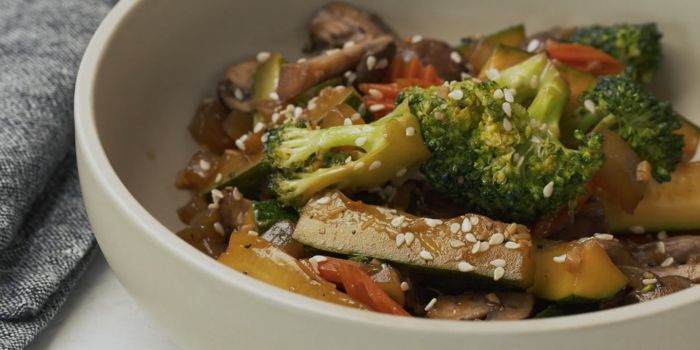
WHY THIS WILL BE YOUR GO-TO RECIPE
This hibachi vegetables recipe is perfect for a quick dinner or meal prep for the week. Imagine perfectly cooked and crunchy veggies smothered in a buttery sauce that feels like heaven in every bite. You’ll love these hibachi stir fry vegetables because they’re so simple to make with minimal ingredients. You can have them ready in less than 20 minutes! It gets even faster if you prep the vegetables ahead of time or use pre-cut options.
This dish is also easy on the wallet, giving you those rich flavors of a steakhouse dinner without the high expense. Not to mention, it’s incredibly healthy and delicious. The crunchy, nutrient-dense vegetables are dressed nicely with a buttery, garlicky, sweet, and savory sauce that is truly finger-licking good.
Can I Make This Ahead of Time?
Yes, you can make hibachi vegetables ahead of time! The key is to keep the teriyaki sauce and vegetables in separate containers until you’re ready to cook and serve them. From my experience, preparing the vegetables ahead makes the cooking process much smoother. I usually prepared the sauce and veggies the night before, storing them separately in the fridge.
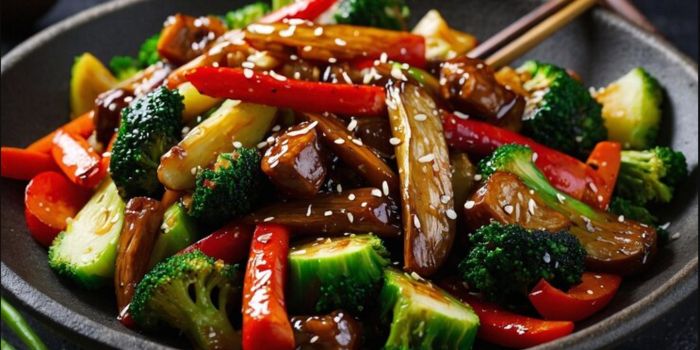
This way, when it’s time to cook, everything is ready to go, and you can have a delicious meal on the table in no time.
Ingredients: (Per serving)
- 1/2 cup zucchini, sliced
- 1/2 cup mushrooms, sliced
- 1/2 cup broccoli florets
- 1/4 cup onions, sliced
- 1/4 cup carrots, sliced
- 1/2 tbsp soy sauce
- 1/2 tbsp teriyaki sauce
- 1/2 tbsp vegetable oil
- 1/2 tsp sesame oil
- Salt and pepper to taste
- 1 garlic clove, minced
- 1/2 tbsp sesame seeds (optional)
Method:
- Heat vegetable oil in a large skillet or wok over medium-high heat.
- Add onions and garlic, sauté for 1-2 minutes until fragrant.
- Add carrots, broccoli, and zucchini. Stir-fry for 3-4 minutes until vegetables are tender-crisp.
- Add mushrooms, soy sauce, and teriyaki sauce. Continue to stir-fry for another 2-3 minutes.
- Drizzle with sesame oil and season with salt and pepper. Sprinkle with sesame seeds if desired.

Additional Info About Hibachi Vegetables.
Here is some additional information that you may have to know about Hibachi Vegetables.
Health Benefits:
- Rich in Vitamins: Provides vitamins A, C, and K.
- High in Fiber: Supports digestion and maintains gut health.
- Low in Calories: Suitable for weight management.
Notes:
- Adjust the amount of soy and teriyaki sauce according to your taste.
- You can add other vegetables like bell peppers or snap peas.
Nutrition (per serving):
- Calories: 150
- Protein: 3g
- Carbohydrates: 15g
- Fat: 9g
- Fiber: 4g

Equipment:
- Large skillet or wok
- Knife
- Cutting board
- Spatula
Serving Suggestions
When it comes to Japanese veggies, they make a delightful side for any Asian fusion meal. They pair wonderfully with hibachi steak and other recipes you’ll find posted soon. I love these vegetables with bang bang sauce or the similar yum yum sauce that’s often served with hibachi dishes. To add an extra touch, you can top them with bean sprouts for that added flare.
Pairing them with steamed rice is a must as it soaks up all the remaining juices, making every bite delicious. For a balanced meal, include some protein like Honey Crispy Chicken, and remember to double the sauce for both the chicken and the vegetables, ensuring they have the exact same delicious flavor. Cooking these vegetables is straightforward and enhances any meal.
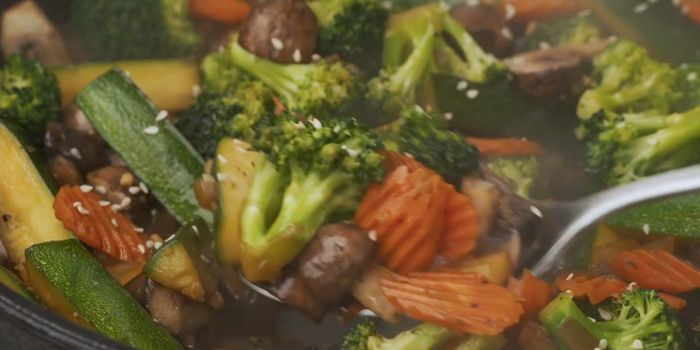
Storage And Reheating
When preparing hibachi vegetables, it’s essential to store and reheat them properly to maintain their delicious flavor and texture. After cooking, let any leftovers cool to room temperature before transferring them to an airtight container. Place the container in the refrigerator, where the vegetables can be stored for up to 3 days. If you plan to keep them longer, store them in the freezer for up to 2 months.
When you’re ready to serve the vegetables again, you have several options to reheat them. My favorite method is using a stovetop with a skillet over medium high heat until they are warm and ready to eat. Alternatively, you can use a microwave or an air fryer if you’re short on time. For best results, if reheating from the freezer, use a large skillet on high heat for about 2 minutes, ensuring the vegetables are heated completely.
WHAT DO I USE TO COOK HIBACHI STYLE VEGGIES?
Cooking hibachi style vegetables at home can be a delightful experience, especially when you have the right tools. For an authentic taste, you can use a wok or a large 12-inch cast iron skillet. The skillet heats quickly, allowing you to move the ingredients around without making a mess.
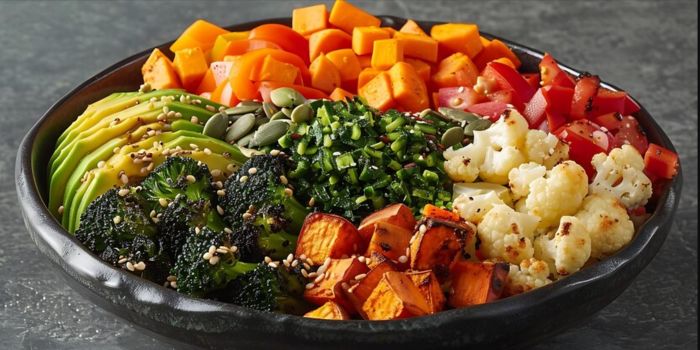
My personal favorite for at-home cooking is a hot Blackstone griddle. This flat top grill ensures even heat distribution, which is perfect for achieving that signature hibachi flavor. If you don’t have a Blackstone, a regular stovetop or hot plate works just as well. Simply heat your pan, add your ingredients, and get ready to enjoy a delicious meal.
Recipe Tips
To make the best hibachi vegetables, start by using pre-sliced, crinkle-cut carrots to save yourself the hassle of slicing. Make sure they are thinly sliced so they soften quicker and keep pace with the other veggies. Use carrots as the benchmark to know when everything is done. If in doubt, check the carrots.

When you grill the veggies, cook them with rice or noodles. To keep broccoli tender but still crisper, add it towards the end. For mushrooms that stay plump, toss them in halfway through cooking. The liquid from the mushrooms will add enough juice to the dish, making it healthier. You can use a butter substitute or just more oil for a healthier option. For a touch of sweetness that kids will love, add a teaspoon of sugar.
Use a large hot pan so the veggies don’t crowd and steam. High heat is key in Asian stir fries to get a crisp texture. Cook the vegetables in layers based on their cook time to avoid watery mush. Add bean sprouts at the end. Make sure the veggies are uniform in size and shape to ensure even cooking. If you’re in a hurry, pre-cut vegetables work well. Finally, add a bit of butter at the end for extra creaminess in the sauce—don’t skip this step!
Recipe Variations
Cooking hibachi vegetables at home is a joyful experience, allowing for easy customization. The crispy, grilled veggies like bell peppers, bean sprouts, and water chestnuts pair well with shrimp or tofu. You can adjust the spice level with black pepper and chili flakes, and add a refreshing touch with lemon juice.
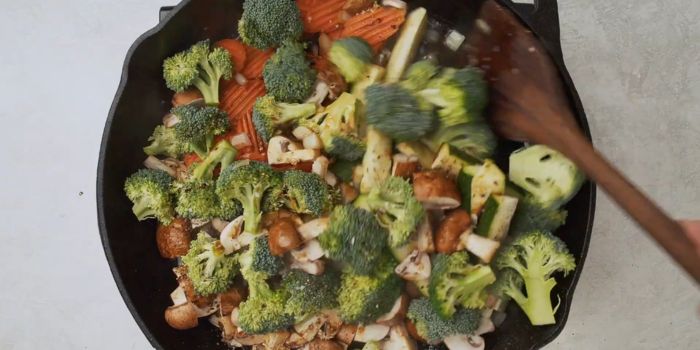
At restaurants, you may find different vegetable combinations, but at home, you can substitute as desired. The dish is versatile, allowing for additions like teriyaki sauce, garlic powder, or ginger for extra flavor, making hibachi cooking simple yet delightful.
What usually comes in hibachi?
When enjoying a hibachi meal, rice is often cooked on the Teppanyaki griddle for added excitement, and noodles are usually included. The meal is versatile with protein-dense options like chicken, beef, and fish, showcasing the chef’s skill and flavor variety.
What does hibachi mean in cooking?
In cooking, hibachi means fire bowl, a cylindrical container with an open top for burning wood or charcoal. Traditional hibachi grills are wooden or ceramic, lined with metal. The design provides direct heat, ideal for cooking hibachi vegetables, and ensures even heat distribution for a unique flavor and sear, transforming simple ingredients into a delightful meal.
Are hibachi vegetables healthy?
Hibachi vegetables are a healthy choice, with about 150 calories per serving. They’re low in calories, high in Vitamin D and fiber, making them a great addition to a balanced meal. Enjoy them guilt-free at a restaurant or home.
What kind of onion is in hibachi?
When cooking hibachi vegetables, selecting the best ingredients is key. Sweet onions like Vidalia or Maui are ideal due to their mild flavor and high sugar content, perfect for the caramelization process on the hibachi grill. Their natural sugars caramelize, adding sweetness to the vegetables.
Hibachi Vegetables: A Tasty Path to Better Health Revealed!
Hibachi vegetables are a Japanese steakhouse favorite, known for their buttery garlic flavor and elegant presentation.

Ingredients
Method
-
Heat vegetable oil in a large skillet or wok over medium-high heat.
-
Add onions and garlic, sauté for 1-2 minutes until fragrant.
-
Add carrots, broccoli, and zucchini. Stir-fry for 3-4 minutes until vegetables are tender-crisp.
-
Add mushrooms, soy sauce, and teriyaki sauce. Continue to stir-fry for another 2-3 minutes.
-
Drizzle with sesame oil and season with salt and pepper. Sprinkle with sesame seeds if desired.
Nutrition Facts
Servings 4
- Amount Per Serving
- Calories 150kcal
- % Daily Value *
- Total Fat 9g14%
- Total Carbohydrate 15g5%
- Dietary Fiber 4g16%
- Protein 3g6%
* Percent Daily Values are based on a 2,000 calorie diet. Your daily value may be higher or lower depending on your calorie needs.
Note
- Adjust the amount of soy and teriyaki sauce according to your taste.
- You can add other vegetables like bell peppers or snap peas.




